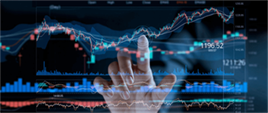
Its ubiquity might have taken away its charm, but there are plenty of exciting things worth knowing about market depth. TradingSim offers a full Level 2 montage as part of it’s trading application. As we mentioned before, there is no better way to learn reading a depth chart https://www.tokenexus.com/ by using level 2 data than by recording your screen or watching a replay. And now we’ll look into different types of charts and more complex tools to help you understand the market. The order book is a list of all the buy and sell orders for a particular cryptocurrency.

Staking Crypto: A Beginner’s Guide on How to Stake Crypto in 2024
This is the movement of the crypto prices over time and can be represented by a line or candlestick chart. The above factors are universal and can potentially affect various instruments, including stocks and futures contracts. However, there can also be additional asset-specific factors that can influence the price. For example, a stock with a strong promoter holding and low float may not be heavily traded on exchanges leading to a lower DOM. A stock recently added to an index may see a surge in the DOM figures as more investors look to add it to their portfolio. The list above is easy to interpret, making DOM one of the most straightforward tools to use for trading.

How Can TradingSim Help?
- As human day traders, we do not want to compete against any of these powers.
- Bollinger Bands are a tool that can be used with an SMA to try and identify how much price volatility can be expected at a given time.
- Luckily, almost any exchange and the trading tool will calculate this for you.
- Depth of market is a tool used by traders to gain an understanding of market supply and demand trends.
On the left side of the vertical timeline is the position of the order book in the past. Are you looking for a quick how to read market depth chart overview of the Bookmap heatmap in action? Automate your cryptocurrency trading with reliable and stable API.
Support And Resistance
Anyone telling you that is oversimplifying the process of trading with L2 data. You will need to put in the hard work of observing market depth to assess signals from this off-chart indicator. The L2 data is displayed in rows of what is known as the order flow. This order flow is also referred to as market depth and displays the best bids.
- As it happens, not all brokers and stock analysis software provide market depth charts.
- By measuring real-time supply and demand, market depth is used by traders to assess the likely direction of an asset’s price.
- Conversely, the sell wall rises as the price increases, signifying an increase in supply as prices climb.
- Traders also use DOM data during key events involving a company or an asset.
- The top row in the Buy segment refers to the highest price a buyer is willing to pay.
- In this digital age, algorithmic trading platforms have become indispensable tools for traders seeking to capitalize on market opportunities.
- In addition, the program must deal with the noise generated by this trader himself in a form of different time intervals and order size during order modifications.
Internet 2002 vs. Crypto 2024

Heatmap in Trading: How To Learn What Market Depth Is Hiding
- Traders believe there will be enough demand at these levels to prevent the market price from falling further.
- In that light, a market depth chart shows any imbalances between the outstanding buy and sell orders.
- You see the orders flying, time and sales streaming, and green and red histogram bars sliding in and out.
- On the other hand, if price swings happen in large volumes, then it’s more indicative of the state of the asset.
- This is where you have to really watch the order flow in the level 2 order book to begin to “feel” the market.
- This means that you can place your cursor at any point on the Bids line and know how much you could potentially sell at a given price.



